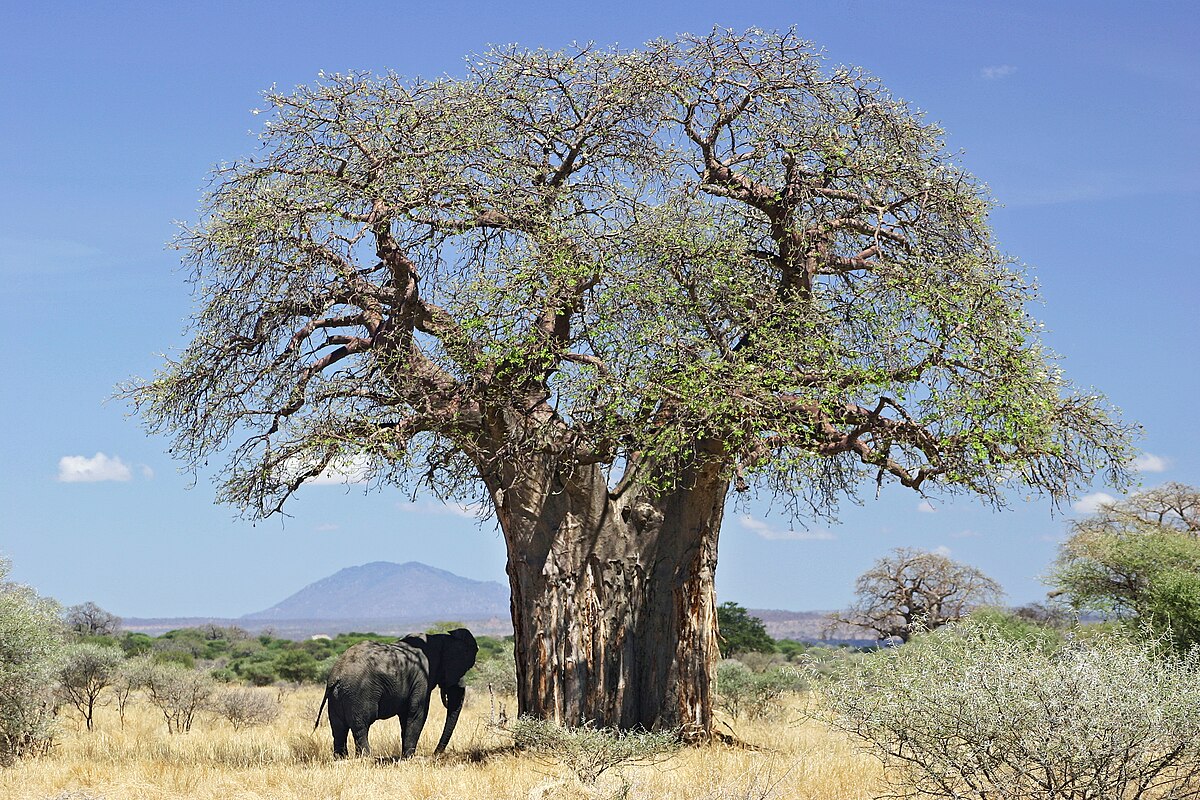- When fruits are harvested in excess, especially from a single area or tree, it can reduce the tree’s ability to replenish itself and produce fruit in future.
Baobab trees store water in their trunks to survive droughts, that is why when talking about water conservation, we need to ensure baobab conservation is paramount.
Baobabs are found in Africa, Australia, and the southern Arabian Peninsula. In Africa, Kenya, Tanzania, Zimbabwe, and South Africa are home to baobabs.
Baobabs grow in the dry, hot savannahs. They can also grow on poor soils with little rainfall.
But how exactly do baobab trees help in water conservation? During the rainy season, these massive trees can store large volumes of water—around 650 litres for every meter of the trunk. Later, when other plants struggle to find water during the dry season, they retrieve their stored water. Baobab’s ability to store water for dry seasons makes it naturally useful in arid environments.
How do baobab trees conserve biodiversity? These desert giants provide natural habitats and nesting sites for numerous bird species. Furthermore, their leaves are food to herbivores. In West Africa, baobab leaves are dried and used as the basis of a sauce for adding gruels, rice, and porridge.
However, the existence of baobab trees is being threatened due to the harvesting of fruits and bark. See, barks protect the baobab from various diseases, growths and other threats. On the other hand, harvesting baobab fruits excessively can disrupt the natural seed dispersal process.
This reduces the number of fruits available for animals to eat and spread. This could affect the tree's regeneration and population growth in the long run.
When fruits are harvested in excess, especially from a single area or tree, it can reduce the tree’s ability to replenish itself and produce fruit in future.
It even gets worse when other factors like climate change come into play. Climate change causes increased drought. Altered rainfall patterns weaken the trees, thus making them susceptible to disease, fire, and wind damage.
Even though baobabs can survive in dry areas, extended periods of drought put stress on their survival. Moreover, climate change affects the growth and survival of younger baobab’s, putting future populations at risk.
If temperatures continue rising, this endangered species may shift, potentially forcing them to migrate to new areas.
